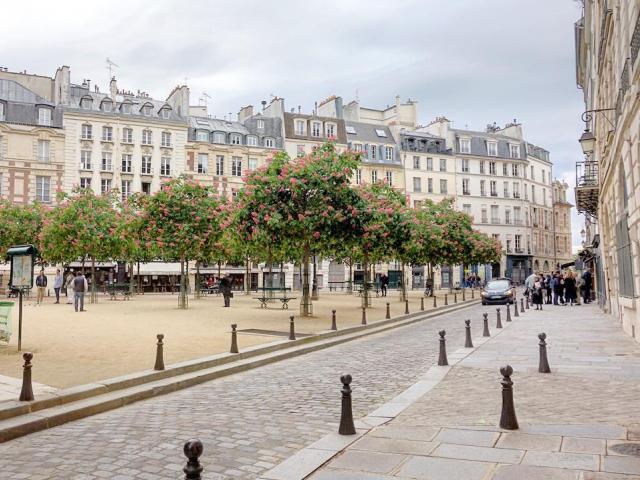Paris
Don't miss anything
Place Dauphine
The Place Dauphine is a magical place, hidden and perhaps less known but in the heart of Paris and an example of 17th century architecture. It allows us to imagine at that time mixed with the current Parisian life, where people in love go, they do a picnic or play petanque.
Its construction began in 1607 under the orders of Henry IV and was the second of its projects of public squares in Paris after the Place Royale (today Place des Vosges in the Marais). Dauphine was a region in the south of France where they formed the "dolphins", the king's successors. The name is given in honor of his son Louis XIII who was born in 1601.
It was one of the first urban projects of Enrique IV. It was located on a plot created as part of the western garden of the walled enclave known as Palais de la Cité (because the Capetian kings lived there a long time ago, before the Louvre was built). Since its construction, almost all the buildings surrounding the square have been raised, rebuilt, replaced with imitations of the original ones or a new façade has been built. Only two maintain their original appearance, those that surround the entrance from the Pont Neuf. In 1792, during the French Revolution, the Place Dauphine was renamed Place Thionville, a name it kept until 1814. The old buildings of the east, badly damaged by a fire during the clashes of the Paris Commune in 1871, were demolished to open the view towards the Palace of Justice.
The last of the houses (located in the southeast corner of the square) was completed in 1616. Originally all were built with more or less the specified facades, which were similar to those of the Place Royale, although more modest. Each unit included two porticoed shop windows on the ground floor lined with stone, between which a narrow door opened into a passage that led to an interior courtyard with a steep staircase leading to the two residential floors. These were covered with angular blocks of brick and limestone.




